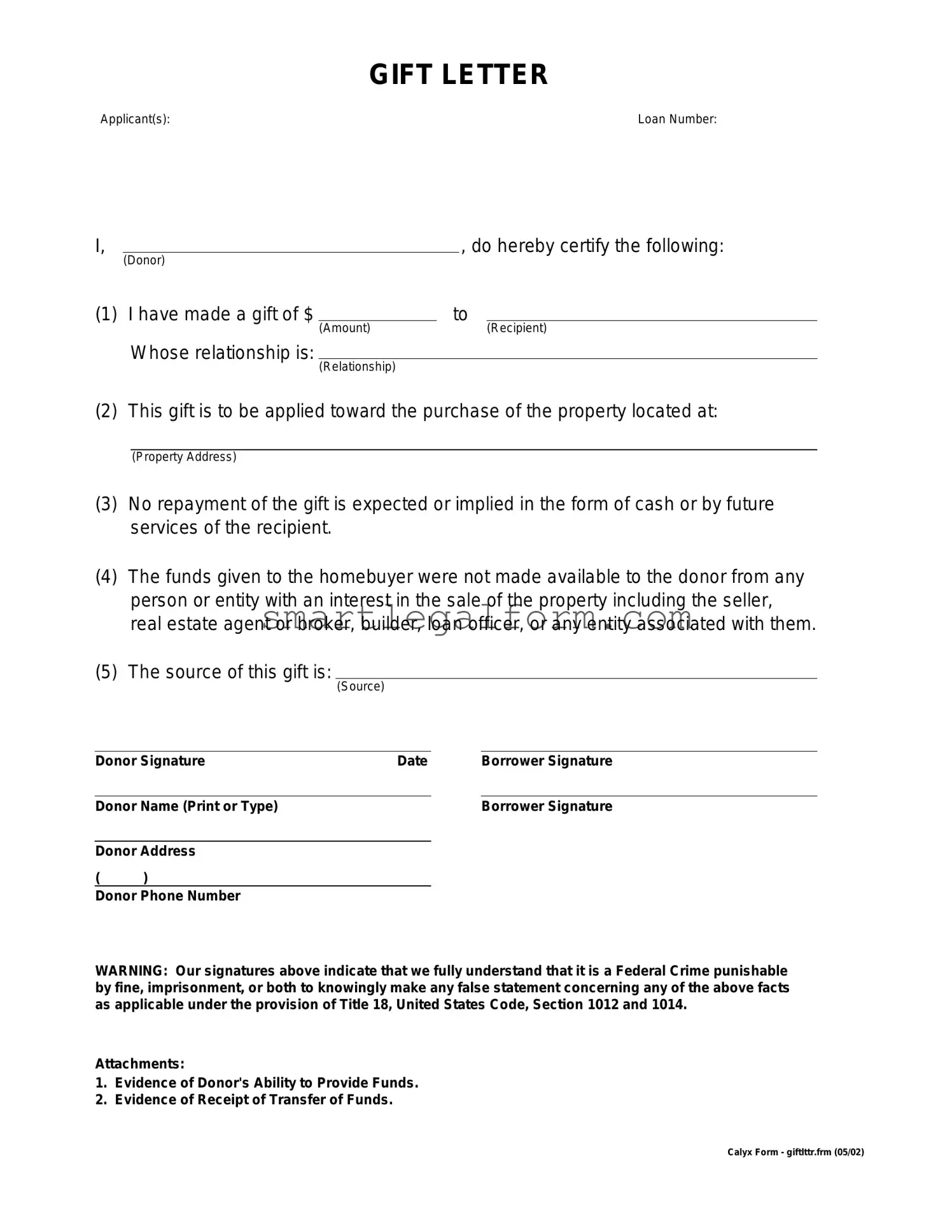When it comes to filling out a Gift Letter form, many people unknowingly make mistakes that can lead to delays or complications in their financial transactions. One common error is providing insufficient information about the donor. It’s crucial to include the donor's full name, address, and contact information. Omitting any of these details can raise questions about the legitimacy of the gift.
Another frequent mistake involves the relationship between the donor and the recipient. Some individuals may neglect to specify how they are connected. This relationship is important for lenders to understand the context of the gift, especially when it comes to mortgages or loans. A clear explanation can prevent misunderstandings later on.
Many people also fail to indicate the exact amount of the gift. It might seem straightforward, but leaving this blank or providing an incorrect figure can lead to complications. Lenders need to know the precise amount to assess the financial situation accurately. Furthermore, it’s essential to ensure that the amount aligns with any relevant documentation, such as bank statements.
Additionally, some individuals overlook the need for a signature from the donor. A Gift Letter is not just a formality; it serves as a legal document. Without the donor's signature, the letter may not hold up if questioned. This oversight can create unnecessary hurdles in the gifting process.
Another mistake is failing to date the letter. A Gift Letter should clearly indicate when the gift was made or is intended to be made. This date is important for record-keeping and can help clarify the timing of the transaction, especially if the funds are being used for a specific purpose, like a home purchase.
People sometimes forget to include a statement confirming that the gift does not need to be repaid. This assurance is vital for lenders, as it distinguishes a gift from a loan. Without this clarification, there could be confusion regarding the nature of the funds, potentially jeopardizing the approval of a loan application.
Moreover, some individuals may not provide adequate context for the gift. Including a brief explanation of the purpose of the gift can be beneficial. Whether it’s for a down payment on a house or assistance with educational expenses, context helps lenders understand the financial dynamics at play.
Another common oversight is not reviewing the entire form for accuracy. Typos or incorrect information can lead to delays or even rejection of the application. Taking the time to double-check every detail can save a lot of trouble down the line.
Lastly, people often neglect to keep a copy of the Gift Letter for their records. This documentation can be invaluable for future reference, especially if questions arise later about the source of funds. Keeping a copy ensures that both the donor and recipient have a clear understanding of the transaction.
In conclusion, filling out a Gift Letter form may seem simple, but it requires careful attention to detail. By avoiding these common mistakes, individuals can ensure a smoother process and help facilitate their financial transactions.

